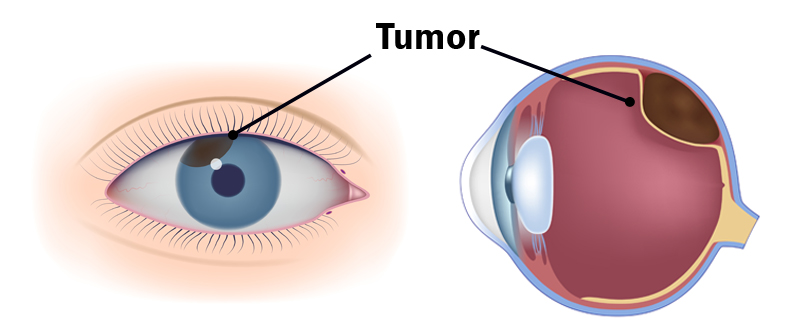
It’s said that the “eyes are the windows to the soul.” If that is true, looking into the eyes of a child, it’s easy to see the beauty and innocence that all of us wish could be more a part of the world they will live in.
I’ve also heard that there is a wonder found in those eyes – a curiosity that opens the child’s brain and heart to all of life’s joys and potentials.
The thought that those eyes could be threatened through accident or disease is a painful reality that all of us at Discovery are working to prevent through all of our cutting-edge research with your on-going support.
All too often I have been present in an ophthalmologist’s office when a caring doctor is forced to tell a family that there is a major problem with their baby’s vision. Diseases of the retina such as glaucoma, or retinitis pigmentosa, are joined by diseases of the cornea like keratoconus. It’s even worse when a family has to hear the diagnosis is retinoblastoma – or a cancer of the eye. In these personal and painful moments, a family’s entire life is forever changed and their child’s struggle with vision will remain on-going and difficult.
August is “Children’s Eye Safety” month, and I can’t think of anything else more important to protect. The eyes of a child are beautiful, full of innocence and love. So, let’s make sure that they will continue to see the world with beauty and clear vision.
The Discovery Eye Foundation is committed to finding the answers that will preserve the vision of millions of people. Our groundbreaking research needs your help to move forward!
To learn how you can help, click here Ways to Help DEF or click the button below to donate online.

 Tom Sullivan
Tom Sullivan
DEF’s Ambassador of Vision
sullivanvision.com


 When you think of cancer, most of us do not think about the eye or vision. Though rare, cancer can start inside or outside of the eye. If cancer starts inside the eyeball it’s called intraocular and if it starts outside the eye (eyelid or in the eye socket) then it’s called extraocular tumor. It can occur in both children and adults. Most major eye centers have specialists who are trained in the diagnosis and treatment of eye cancers.
When you think of cancer, most of us do not think about the eye or vision. Though rare, cancer can start inside or outside of the eye. If cancer starts inside the eyeball it’s called intraocular and if it starts outside the eye (eyelid or in the eye socket) then it’s called extraocular tumor. It can occur in both children and adults. Most major eye centers have specialists who are trained in the diagnosis and treatment of eye cancers. At the later stage of this cancer, the only one way to survive is to remove the eyeball (enucleation). Like many of other types of cancer, retinoblastoma has a genetic component so genetic testing needs to be done. The tumor begins with the RB1 gene mutation that stimulates retinal cells to develop into a tumor called a retinoblastoma. The RB1 mutation can be inherited from the parents, but in some cases it is sporadic and not inherited. There are various treatments such as surgery, chemotherapy, radiotherapy etc. to cure retinoblastoma cancer. Rarely it can spread beyond the eye.
At the later stage of this cancer, the only one way to survive is to remove the eyeball (enucleation). Like many of other types of cancer, retinoblastoma has a genetic component so genetic testing needs to be done. The tumor begins with the RB1 gene mutation that stimulates retinal cells to develop into a tumor called a retinoblastoma. The RB1 mutation can be inherited from the parents, but in some cases it is sporadic and not inherited. There are various treatments such as surgery, chemotherapy, radiotherapy etc. to cure retinoblastoma cancer. Rarely it can spread beyond the eye. 